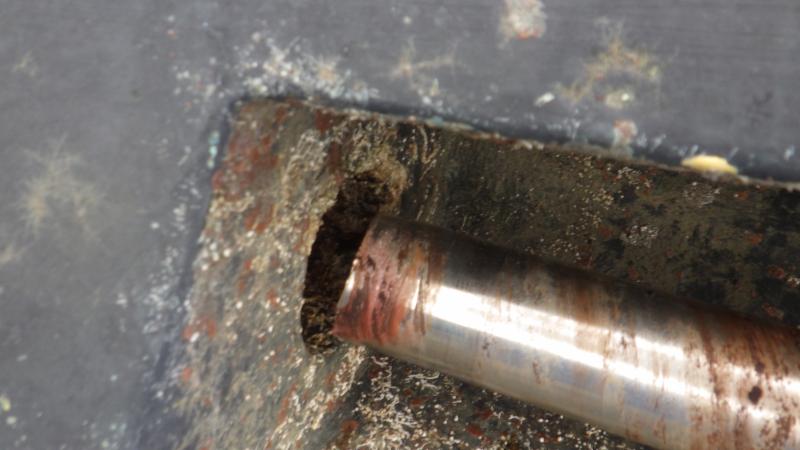This is a broken propeller shaft. It broke ½” aft of the transmission coupler keyway.
The 30 year old boat had a relatively new owner, he had reversed out of his slip and had operated at approximately 15 minutes at low speed. The failure happened as he throttled up in forward and felt something unusual on the steering wheel. This was the propeller contacting the rudder.
He then noticed that he had lost power from his port engine, though the engine ran and the transmission shifted normally.
A quick check of the engine room revealed that the port propeller shaft had slid out of the shaft seal, allowing a 2.5” stream of water into the engine room.
Fortunately experienced boaters were aboard along with emergency wooden dowel plugs, one of which fit nicely into the shaft seal hole.
This averted any significant water intrusion event, the vessel was hauled shortly thereafter limiting the damage to the broken shaft and bent propeller.
It defies logic that the propeller shaft was strong enough to assist in reversing the vessel out of its slip, but broke shortly thereafter while operating in forward. Logically one would think, if the shaft was that close to failure, it would have failed in reverse.
The lines across the break surface of the shaft are called beach lines. These are where a crack in the shaft has propagated across the face of the break surface, or through the shaft, until the point of failure.
This particular failure is unusual, as most propeller shaft failures occur at the key which allows connection to the transmission coupler or the propeller.
Boats maintained “in class” are required to pull their propeller shafts every five years. Most recreational vessels only pull propeller shafts if a problem develops. Another problem which is common with stainless steel propeller shafts is anaerobic corrosion below the shaft seals and strut bearings, caused by long periods of disuse and the unfortunate weaknesses of stainless steel.
This recent failure resulted in relatively little damage, due to the operator recognizing the problem quickly, inspecting the engine room and most importantly having proper emergency response equipment aboard.











